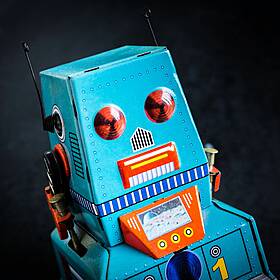
Can a robot be a person?
17 September 2023 - 35 minsWhile the question of 'what is a robot?' might have been easily answered just a few years ago, it is increasingly difficult to define.
So, rather than try to fit robots into the existing categories of what is a person and what is a thing, do we need a new framework for the twenty-first century?David J. Gunkel thinks so.
He is Professor of Media Studies at Northern Illinois University and author of ‘Person-Thing-Robot: A Moral and Legal Ontology for the 21st Century and Beyond’ - he joins Jonathan to discuss.



























